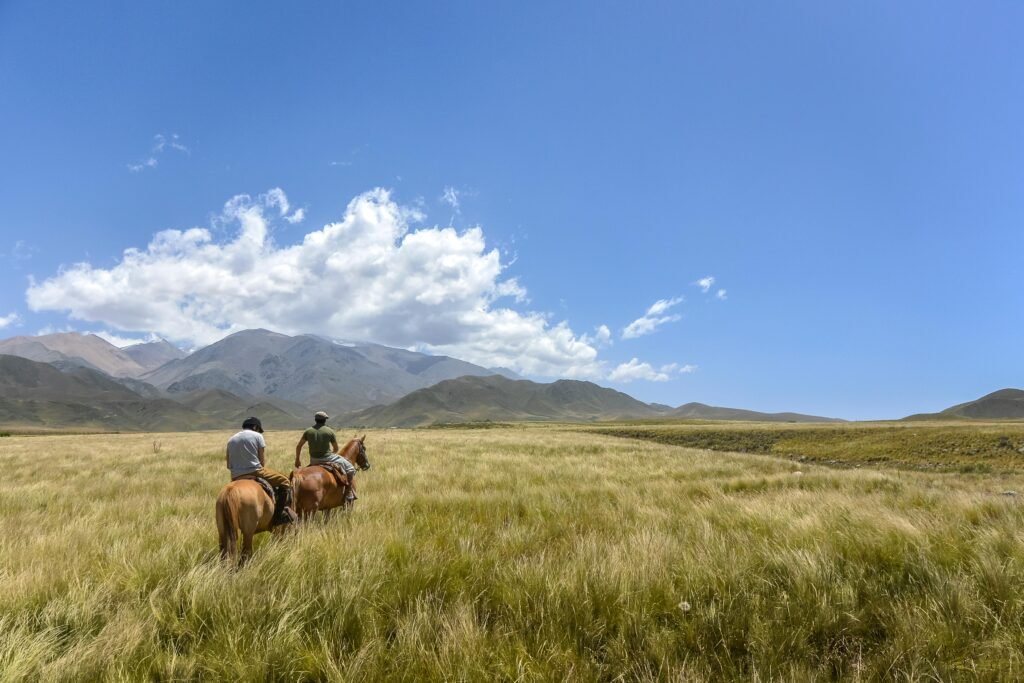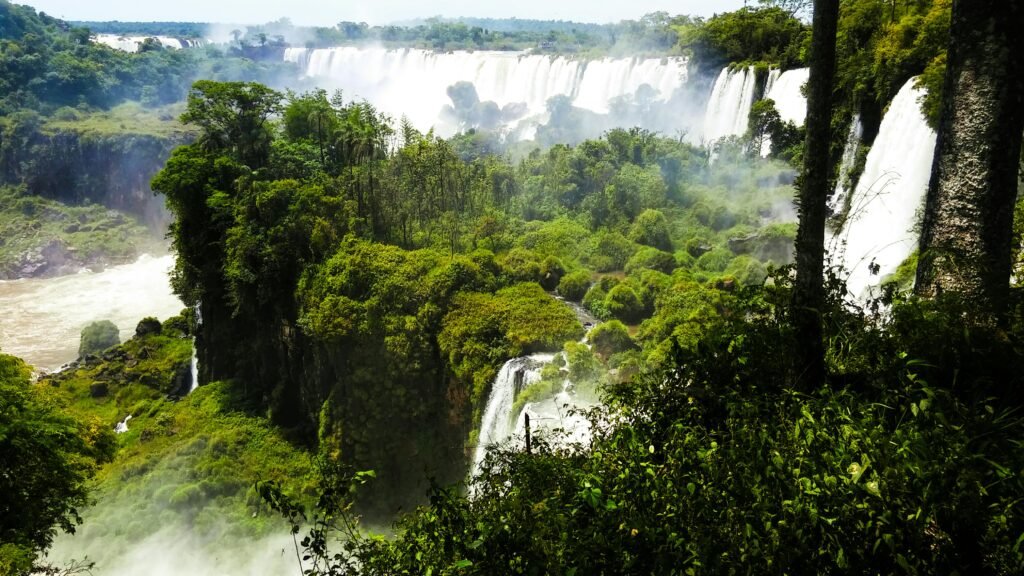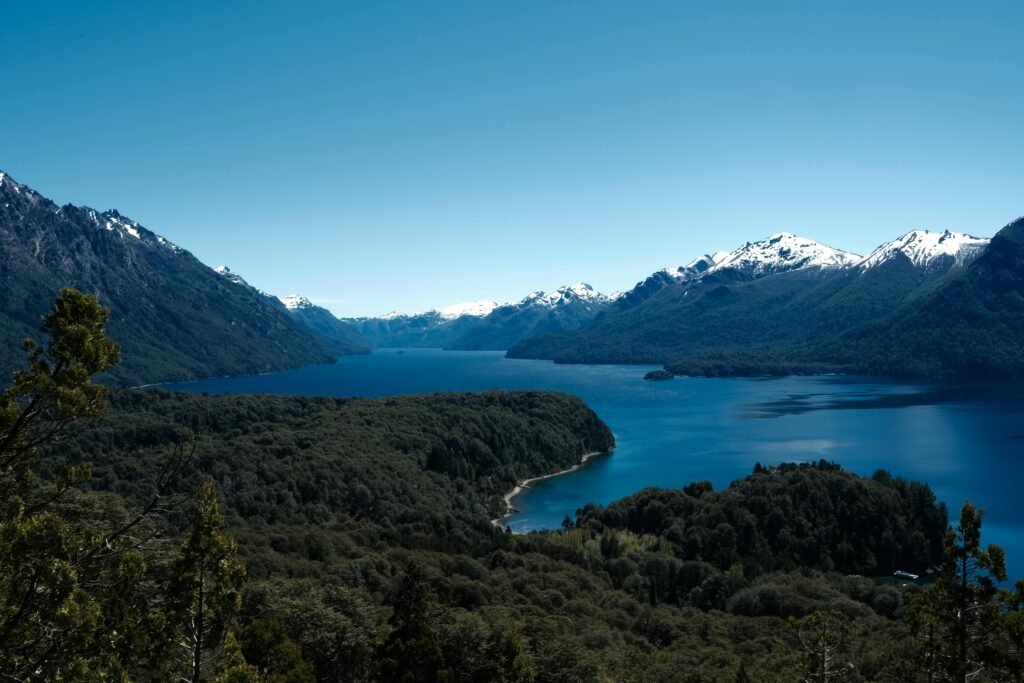Introduction to Argentina’s Tourist Appeal
Argentina, a country known for its spectacular landscapes and rich cultural heritage, has become a favored destination for travelers from around the globe. Stretching from the southern tip of South America to the subtropical north, Argentina showcases a variety of ecosystems, including the majestic Andes mountain range, breathtaking Patagonian glaciers, and the vibrant wetlands of the Iberá. These diverse terrains create not only stunning vistas but also unique opportunities for outdoor activities such as skiing, hiking, and birdwatching, making Argentina a versatile travel destination.
The cities of Argentina further enhance its appeal. Buenos Aires, the capital, is renowned for its European charm and lively atmosphere. Here, tourists can immerse themselves in the tango culture, visit world-class art galleries, and indulge in the culinary delights offered by both traditional and contemporary restaurants. Other notable cities, such as Mendoza, are famous for their wines, particularly Malbec, attracting wine enthusiasts who wish to explore the picturesque vineyards dotted across the landscape.
Argentina’s historical context adds yet another layer to its tourist allure. The country’s past, filled with indigenous cultures, colonial influence, and significant events such as the fight for independence, has shaped its rich cultural tapestry. This historical narrative can be explored through numerous museums, heritage sites, and colonial architecture that tourists can engage with. By combining its stunning natural landscapes, dynamic urban centers, and a history that captivates, Argentina stands as a premier tourist destination, alluring millions every year with a blend of opportunities for adventure and cultural enrichment.
Buenos Aires: The Heartbeat of Argentina
Buenos Aires, the vibrant capital of Argentina, serves as the country’s cultural and political cornerstone. This dynamic city is renowned for its European-style architecture, deeply rooted in its colonial past, and the lively energy that permeates its streets. The city’s layout, with its picturesque boulevards and stunning plazas, reflects a historical blend of cultures that has shaped its identity. Notable districts such as La Boca, with its colorful houses and energetic street life, are a testament to the city’s artistic spirit, often capturing the essence of Argentine life through murals and street performances. La Boca also hosts the famous Caminito street, which is synonymous with tango—a dance that embodies the city’s passion and rhythm.
The Recoleta Cemetery, another highlight of Buenos Aires, is not only a final resting place for many of Argentina’s most notable figures, including Eva Perón, but also an architectural marvel. The elaborate mausoleums and tombs serve as a reflection of the country’s societal values and honors to its history. This site attracts both tourists and locals who seek to understand the rich tapestry of the Argentine heritage through its art, culture, and the stories of those interred there.
Additionally, the iconic Obelisco, situated along Avenida 9 de Julio, stands as a proud symbol of the city’s historical events and national pride. This monument is often a gathering point for significant happenings, celebrated cultural events, and public demonstrations, showcasing the social life that is integral to Buenos Aires. The city’s cafes, theaters, and music venues further enrich its cultural landscape, making Buenos Aires not just the capital, but the very heartbeat of Argentina, pulsating with a distinct rhythm that echoes through its art, cuisine, and the everyday lives of its citizens.

Mendoza: The Wine Capital
Mendoza, renowned globally as the wine capital of Argentina, boasts a rich viticultural heritage primarily centered around its prestigious Malbec wines. The province is characterized by its fertile plains, mild climate, and the exceptional altitude of the Andes Mountains, all of which create ideal conditions for grape cultivation. With over 1,200 wineries, Mendoza offers a wide range of experiences for both seasoned connoisseurs and casual wine enthusiasts. Many vineyards allow visitors to partake in guided tours that provide insights into the winemaking process, from grape harvest to bottling.
Wine tours in Mendoza typically include tastings of exquisite varietals, accompanied by breathtaking views of the surrounding landscape, which consists of rolling hills and panoramic mountain vistas. Many visitors take the opportunity to indulge in gourmet cuisine at vineyard restaurants, where local dishes are expertly paired with house specialties. This culinary aspect adds another layer to Mendoza’s allure, as it showcases the region’s agricultural bounty beyond just wine production.
Beyond its viniculture, Mendoza is a haven for outdoor activities. The area is particularly popular among nature lovers and adventure seekers. Hiking and trekking in the nearby Andes Mountains offer opportunities to explore diverse environments, from desert landscapes to lush forests. Additionally, river rafting on the Mendoza River provides a thrilling experience amid scenic views. With its blend of natural beauty, adventure, and cultural richness centered on wine, Mendoza appeals to a wide array of visitors, making it a pivotal destination in Argentina.

Iguazu Falls: Nature’s Masterpiece
Iguazu Falls, a UNESCO World Heritage site and one of the Seven Natural Wonders of the World, captures the imagination with its breathtaking beauty. Located at the border between Argentina and Brazil, this monumental waterfall system stretches 1.7 miles and consists of approximately 275 individual falls, with the most famous being the Garganta del Diablo, or Devil’s Throat. The sight and sounds of the cascading water engulf visitors, creating a mesmerizing experience amid the lush, surrounding rainforest, which serves as a habitat for diverse flora and fauna.
When planning a visit to Iguazu Falls, it is essential to consider the best viewpoints to maximize the experience. The Argentine side of the falls is home to extensive walking trails, offering unique perspectives. Notably, the upper and lower circuits provide distinct views of the falls, unveiling their grandeur from various angles. Visitors should not miss the option to take a boat ride that brings you close to the base of the falls, allowing for an exhilarating and immersive experience. Additionally, the surrounding national park offers opportunities for wildlife spotting, making it an ideal habitat for an array of species, including toucans and monkeys.
Moreover, preserving Iguazu Falls is of paramount importance due to its ecological significance. Conservation efforts in the region aim to protect the delicate balance of the rainforest ecosystem and ensure that future generations can appreciate the majestic falls. Engaging in responsible tourism practices, such as minimizing litter and respecting wildlife, helps contribute to the sustainability of this natural wonder. Ultimately, a visit to Iguazu Falls is not merely a sightseeing adventure; it is an opportunity to connect with nature and foster a commitment to environmental stewardship.

Bariloche: A Slice of Switzerland in Patagonia
Bariloche, officially known as San Carlos de Bariloche, is a picturesque town nestled in the heart of the Patagonian Andes in Argentina. Positioned on the shores of the stunning Nahuel Huapi Lake, it boasts breathtaking views of snow-capped peaks and lush forestry, creating a stunning backdrop for both relaxation and adventure. This remarkable destination draws tourists from all over the world, where visitors can enjoy a myriad of activities throughout the year, from skiing to trekking, making it a versatile getaway.
The town is renowned for its Swiss-inspired architecture, reflecting the significant influence of Swiss settlers who arrived in the early 20th century. The blend of wooden chalets and modern buildings adds character to its charming streets, often lined with quaint shops and cafes. Notably, Bariloche is famous for its artisanal chocolate. Tourists can indulge their sweet tooth by visiting local chocolate shops that showcase a variety of delectable treats, offering everything from rich chocolate truffles to creamy hot chocolate. These culinary delights are a testament to the town’s unique culture and its delightful merging of influences.
Adventure seekers will find Bariloche to be a veritable playground. In the winter months, the nearby Cerro Catedral transforms into a premier skiing destination, attracting snow sports enthusiasts who come to experience its exceptional slopes. During the summer, outdoor lovers can explore an extensive network of hiking trails that meander through the scenic landscapes, leading to hidden waterfalls and panoramic vistas. Additionally, sailing on the glistening waters of Nahuel Huapi Lake offers a refreshing way to soak in the natural beauty that surrounds this remarkable location.
As a multifaceted destination, Bariloche perfectly exemplifies the fusion of adventurous outdoor pursuits, gourmet experiences, and alpine charm that appeals to a diverse array of travelers. Whether indulging in local crafts or embarking on thrilling outdoor adventures, visitors to this captivating town are sure to create lasting memories amidst the stunning environments of Patagonia.

Local Argentine Cuisine: A Culinary Journey
Argentina’s culinary landscape is a rich tapestry of flavors, traditions, and social connections, deeply intertwined with its cultural identity. The nation’s cuisine is renowned for its focus on high-quality ingredients, particularly in meat preparations. A quintessential Argentine experience revolves around asado, a traditional barbecue that not only serves as a meal but also as a communal event where family and friends come together. This gathering highlights the significance of food as a medium for social interaction, reflecting the Argentine value placed on shared experiences.
Asado showcases various cuts of beef, lamb, and pork, all grilled to perfection over an open flame. The preparation of asado is an art form, typically involving specialized techniques and extensive knowledge regarding the optimal cooking temperatures. Accompaniments such as chimichurri sauce, a vibrant mix of parsley, garlic, vinegar, and oil, elevate the experience, making it a favorite at both casual and festive gatherings.
In addition to asado, empanadas are another staple of Argentine cuisine. These savory pastries come filled with an array of ingredients, including beef, chicken, cheese, or vegetables, depending on the region. The origins of empanadas can be traced back to Spanish influences, yet over the years, each province has developed its own unique take that showcases local flavors and traditions.
Dulce de leche, a sweet caramel-like spread made from milk and sugar, is a beloved treat in Argentina. It can be found in various desserts, such as alfajores (cookies filled with dulce de leche) or served on its own, featuring prominently in local dessert menus. This ingredient exemplifies the country’s dedication to sweet flavors and is a testament to the influence of Spanish and Italian culinary traditions.
Across the country, numerous restaurants celebrate these culinary wonders, offering locals and tourists alike an authentic taste of Argentine cuisine. Whether dining in a bustling Buenos Aires steakhouse or enjoying regional specialties in Mendoza, the experience of tasting local dishes provides insights into the heart of Argentine culture and the traditions that bind its people together.
Cultural Insights: Tango and Other Traditions
The vibrant culture of Argentina is a tapestry woven from diverse influences, and at its heart lies the iconic dance known as tango. Originating in Buenos Aires in the late 19th century, tango encapsulates the passion and intensity of Argentine life. This dance form, characterized by its dramatic choreography and profound emotional expression, is not only a popular performance art but also an integral element of social gatherings. The world-renowned tango festivals and milongas attract countless visitors, eager to immerse themselves in this dance culture, making it a vital aspect of Argentina’s identity and tourism.
Beyond tango, Argentina’s cultural landscape is enriched by a variety of traditional music and dance styles. Folk music, represented by genres like milonga and chacarera, showcases the country’s rural roots and celebrates its heritage through storytelling. These performances are often accompanied by regional dances that reflect the unique customs of Argentina’s provinces, reinforcing the connection between music and community. Additionally, Argentine literature has produced internationally acclaimed writers, such as Jorge Luis Borges and Julio Cortázar, whose works continue to influence global literary traditions.
The culinary scene also plays a pivotal role in reinforcing the cultural identity of Argentina. Asado, the traditional barbecue, is more than a meal; it is a social event that brings families and friends together. The emphasis on sharing food echoes the values of community and togetherness, mirroring the rich cultural narratives that define Argentine life. These traditions not only enhance the tourist experience in Argentina but also serve as a reminder of the country’s storied past and vibrant present.
In conclusion, the cultural fabric of Argentina, highlighted by tango and a plethora of other art forms and traditions, offers a profound insight into what makes this country so appealing to visitors. Through dance, music, and cuisine, Argentina continues to showcase its rich heritage and invites tourists to partake in its enduring legacy.
Historical Background: Argentina’s Journey Through Time
Argentina’s history is a complex tapestry woven with diverse influences, from ancient indigenous cultures to European colonization and modern developments. The land that is now Argentina was originally inhabited by various indigenous groups, such as the Diaguita and Guarani, who had established complex societies long before the arrival of Spanish explorers in the 16th century. The interactions between these indigenous populations and the incoming Europeans significantly shaped the cultural landscape of the region.
In 1516, Juan Díaz de Solís became one of the first Europeans to explore the Rio de la Plata. This marked the beginning of Spanish colonization, which gained momentum with the establishment of Buenos Aires in 1536. However, it was not until 1580, when the city was re-founded by Juan de Garay, that Buenos Aires settled firmly as a key colonial port. The Spanish colonial period greatly influenced Argentina’s architecture, language, traditions, and societal structures.
As time progressed, Argentina experienced significant political and social transformations. The struggle for independence began in the early 19th century, spurred by revolutionary ideas from Europe and successful uprisings in neighboring regions. By 1816, Argentina formally declared its independence from Spain, with key figures like José de San Martín leading the charge in the fight for freedom.
The 19th century also saw challenges with internal conflicts and the establishment of a centralized government. The constitution of 1853 laid the groundwork for a democratic republic, promoting liberties but also leading to political strife in the following decades. Economic prosperity strengthened in the late 19th and early 20th centuries, driven by agriculture and immigration, establishing Argentina as one of the world’s leading countries.
Today, modern Argentina faces various challenges, including economic volatility and social disparities. Despite these issues, the historical backdrop contributes significantly to the rich cultural heritage that captivates visitors. Understanding this historical narrative not only informs tourists about their surroundings but also provides a deeper appreciation for Argentina’s unique identity.
Travel Tips for Visiting Argentina
Visiting Argentina can be a remarkable experience, but preparation is key to ensuring a smooth journey. The best time to visit typically falls between spring (September to November) and fall (March to May), when the weather is mild and natural beauty is at its peak. However, Argentina’s diverse climate means each region offers unique attractions year-round. Before starting your adventure, consider the geography and climate of the specific areas you wish to explore.
Transportation in Argentina varies greatly. Large cities like Buenos Aires offer extensive public transport options including buses, subways, and taxis. For long-distance travel, consider domestic flights and overnight buses, which are comfortable and often economical. Renting a car is also a possibility, though it is advisable only for those familiar with local driving customs and road conditions.
Safety is a top concern for many travelers. While Argentina is generally safe, exercising caution is wise, particularly in urban areas. Avoid flashing valuables, especially in crowded places, and remain aware of your surroundings. It is beneficial to keep a copy of important documents, such as your passport and itinerary, in a separate location from the originals.
Cultural etiquette plays an important role in your travel experience. Learning a few basic Spanish phrases can significantly enhance interactions, as English may not be widely spoken outside tourist areas. When dining or socializing, greetings and polite gestures, such as saying “por favor” (please) and “gracias” (thank you), are appreciated. Additionally, be prepared for a leisurely dining experience, as meals in Argentina can be lengthy and social. Understanding these social norms will not only enrich your experience but also foster respect with locals.
Lastly, familiarize yourself with the Argentine currency, the peso (ARS), to effectively manage your expenses. Handling local currency can also mitigate any potential issues associated with credit card use. By considering these travel tips, tourists can navigate Argentina with confidence, ensuring a memorable and enjoyable visit.



